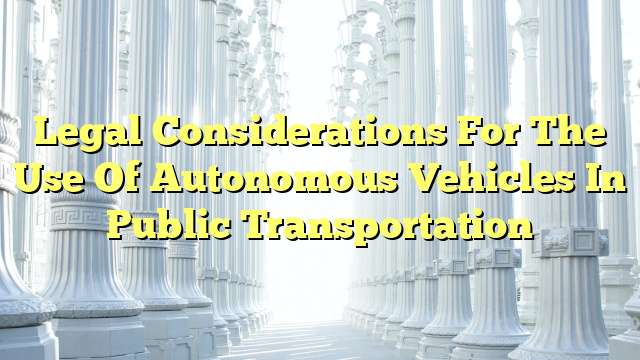Table of Contents:
- Legal Issues
- Legality of Autonomous Driving
- Ethical Considerations
- Ethical Concerns with Autonomous Vehicles
- Ethical Considerations for Self-Driving Cars
Legal Issues
The use of autonomous vehicles in public transportation raises a number of legal issues. Autonomous vehicles involve the use of advanced technological systems, such as sensors, cameras, and artificial intelligence, which can introduce potential liabilities for the operators of the vehicles and the owners of the systems. Additionally, autonomous vehicles can be subject to different laws and regulations in different jurisdictions, which can create a complicated legal landscape for operators to navigate.
Legality of Autonomous Driving
The legality of autonomous driving, or the operation of autonomous vehicles, is still largely unsettled in many countries. In the United States, for example, the National Highway Traffic Safety Administration (NHTSA) has issued guidelines for the safe operation of autonomous vehicles, but the legality of autonomous driving varies from state to state. Some states, such as California and Nevada, have passed laws that permit the operation of autonomous vehicles on public roads, while other states, such as New York, have yet to pass such laws.
Ethical Considerations
In addition to the legal considerations associated with the use of autonomous vehicles in public transportation, there are also ethical considerations. Autonomous vehicles involve the use of advanced technology and artificial intelligence, which can raise questions about the safety and security of the vehicles and the passengers they carry. There is also the potential for ethical issues to arise with regard to the use of autonomous vehicles in public transportation, such as the potential for technology to discriminate against certain passengers or the potential for autonomous vehicles to be used to surveil and monitor passengers.
Ethical Concerns with Autonomous Vehicles
The ethical concerns associated with autonomous vehicles in public transportation are related to both safety and privacy. With regard to safety, there is the potential for autonomous vehicles to malfunction and cause serious injury or even death. Autonomous vehicles also involve the use of advanced technology and artificial intelligence, which can present potential risks, such as the potential for the vehicles to be hacked or for the technology to be used to spy on passengers.
In terms of privacy, there is the potential for autonomous vehicles to be used to monitor and surveil passengers. Autonomous vehicles use cameras and sensors to detect their environment and the passengers in the vehicle, which can present potential risks to passengers’ privacy. Additionally, the use of artificial intelligence and other technological systems can present potential risks, such as the potential for the technology to be used to target certain passengers or to discriminate against certain passengers.
Ethical Considerations for Self-Driving Cars
In addition to the ethical considerations associated with the use of autonomous vehicles in public transportation, there are also ethical considerations for self-driving cars. Self-driving cars are a type of autonomous vehicle that is designed to operate without a human driver. The ethical considerations associated with self-driving cars involve questions such as how the car should respond in the event of an emergency and how the car should prioritize the safety of the passengers and other drivers on the road. Additionally, there are questions about the potential for self-driving cars to be used to surveil or monitor passengers, or to discriminate against certain passengers.
The use of autonomous vehicles in public transportation presents a number of legal and ethical considerations that must be addressed. These legal and ethical considerations are important to consider in order to ensure the safe and secure operation of autonomous vehicles in public transportation. Additionally, it is important to consider the potential risks associated with the use of autonomous vehicles, such as the potential for malfunctions and the potential for the technology to be used to discriminate against certain passengers or to surveil or monitor passengers.

